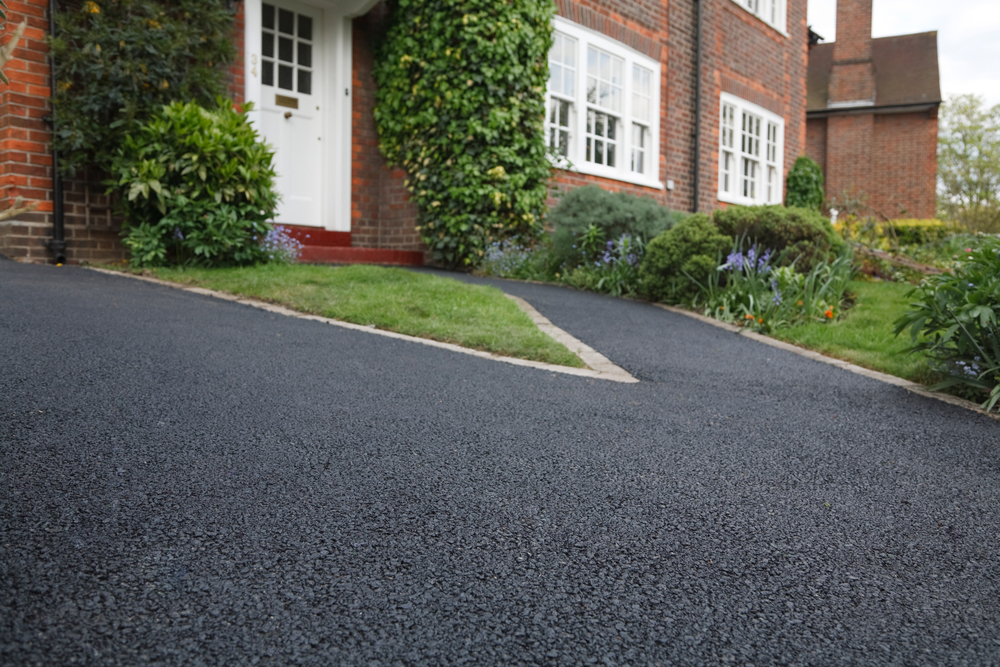Prolong Pavement Lifespan: Innovative Cold Mix Asphalt Sealing
Prolong Pavement Lifespan: Innovative Cold Mix Asphalt Sealing
Blog Article
Cold Mix Asphalt Vs. Hot Mix Asphalt: Which Is Right for You?

Structure Distinctions
Cold mix and warm mix asphalts vary substantially in their structure, with unique attributes that affect their efficiency and applications. Cold mix asphalt is produced by emulsifying the asphalt binder with water and an emulsifying agent before mixing it with aggregate. This technique enables the asphalt to be workable at lower temperature levels, making it perfect for short-lived fixings and for use in chillier climate conditions. Warm mix asphalt, on the other hand, is manufactured at heats, normally in between 300-350 ° F, which helps to attain much better compaction and an extra long lasting end product. The warm mix asphalt production procedure entails heating up the accumulation and asphalt binder independently prior to incorporating them at the asphalt plant.
In addition, cold mix asphalt has a tendency to be less dense and extra flexible than warm mix asphalt. This adaptability makes it much better matched for areas with greater degrees of motion, such as driveways or roadways with rush hour. On the other hand, warm mix asphalt is understood for its high toughness and resistance to rutting and breaking, making it a favored choice for highways and high-traffic roadways where long life is vital.
Setup Refine Variances
The procedure of mounting cold mix and hot mix asphalt shows notable variances in their procedures and requirements. In comparison, warm mix asphalt demands an extra fancy installment process. Due to the home heating demands, hot mix asphalt installations are typically lugged out by experts with specialized equipment, making sure a more permanent and structurally sound outcome.
Durability and Long Life Aspects
When thinking about asphalt choices, sturdiness and long life are crucial aspects to review for long-term sidewalk efficiency. Warm mix asphalt (HMA) is recognized for its outstanding resilience and long life.
In terms of durability, HMA generally outshines CMA as a result of its remarkable strength and resistance residential or commercial properties. HMA pavements have a longer life span, needing much less regular repair work and maintenance, which can convert to set you back financial savings in the future. In addition, HMA pavements are much more quickly personalized to meet specific project requirements, even more boosting their toughness.
Price Considerations
Thinking about the monetary ramifications is an important aspect when examining the option between warm mix asphalt (HMA) and chilly mix asphalt (CMA) for sidewalk projects. While the preliminary price of hot mix asphalt is typically greater than that of chilly mix asphalt, HMA frequently provides a much more economical service over time as a result of its premium durability and long life. HMA is understood for its ability to hold up against heavy web traffic tons and severe weather condition problems, lowering the demand for constant repair services and upkeep. On the other hand, chilly mix asphalt is much more inexpensive upfront however may call for even more frequent patching and resurfacing, bring about greater upkeep costs over time.
Along with product prices, it's vital to take into consideration the expenditures connected with installation and upkeep when comparing HMA and CMA. HMA normally calls for customized equipment and experienced labor for correct installment, which can impact overall job prices. Alternatively, CMA is simpler to work with and can typically be applied using simpler strategies, potentially lowering installation expenditures. Ultimately, the decision between HMA and CMA should take right into account not simply the preliminary price yet also the long-term financial effects to establish the most economical alternative for the specific sidewalk project.
Environmental Effect Comparison
Comparison of the environmental influences in between hot mix asphalt (HMA) and cold mix asphalt (CMA) discloses distinct differences in sustainability techniques. HMA manufacturing calls for heats, bring about increased energy usage and greenhouse gas discharges. The procedure also releases unstable natural compounds (VOCs) and hazardous air pollutants (HAPs) right into the environment. In comparison, CMA is produced and applied at lower temperatures, minimizing power usage and emissions substantially. The reduced manufacturing temperature levels of CMA result in decreased fuel usage and lower levels of CO2 emissions, making it a much more eco-friendly pop over to this site choice.
Furthermore, the usage of CMA usually entails reusing existing asphalt sidewalk, promoting source conservation and decreasing the amount of waste sent out to land fills. By opting for CMA over HMA, roadway building projects can contribute favorably to environmental More Bonuses preservation efforts.
Final Thought
To conclude, the selection between cold mix asphalt (CMA) and warm mix asphalt (HMA) depends upon numerous elements such as make-up, installment procedure, sturdiness, longevity, expense, and ecological effect. cold mix asphalt. While CMA uses a economical and fast solution for minor fixings, HMA makes certain exceptional resilience and longevity for heavy website traffic areas. Take into consideration these factors very carefully to establish which kind of asphalt is the right option for your paving needs

Thinking about the economic implications is a critical aspect when evaluating the selection between warm mix asphalt (HMA) and cool mix asphalt (CMA) for sidewalk tasks. While the initial expense of warm mix asphalt is generally greater than that of cool mix asphalt, HMA frequently gives a more affordable option in the long run due to its superior sturdiness and long life. cold mix asphalt.Comparison of the environmental impacts in between warm mix asphalt (HMA) and cool mix asphalt (CMA) reveals distinct differences in sustainability methods.In verdict, the selection between cold mix asphalt article source (CMA) and hot mix asphalt (HMA) depends on numerous elements such as make-up, installation process, sturdiness, long life, cost, and environmental effect
Report this page